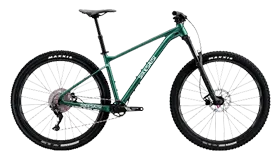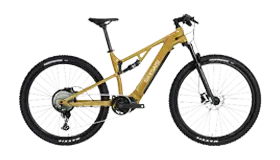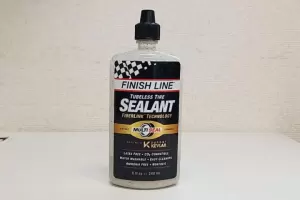Road vehicles consumable parts and replacement time [Part 1]
Table of contents
1. Strictly speaking, road cars are consumables as a whole
2. Prioritize the replacement of consumable parts that are directly related to safety.
3.Tire replacement time
4.Inner tube
5.Tire repair fluid
6. Brake block (disc brake)
9.Brake disc (disc brake)
8. Brake pads (rim brakes)
9. Brake cables (hydraulic disc brakes)
10. Brake cables (rim brakes)
11. Gear shift cable related (mechanical brake)
12. Transmission cable related (electric transmission)
13.Chain
14. Cassette flywheel/toothed chainring/small flywheel and other sprocket related matters
15. Handlebar straps
1. Strictly speaking, road bikes are consumables as a whole
The so-called whole road bike is a consumable. It includes the frame, front fork, wheel set and all other components. They are all consumable parts with a life span and cannot be used forever after purchase.
2. Prioritize the replacement of consumable parts that are directly related to safety aspects
The first is the tires. This is the only part in contact with the ground and consumes the most. Excessive tire wear not only fails to provide safety, but also fails to give full play to riding performance.
Next is the brake pad (disc brake) or brake pad (rim brake). It can be dangerous if you can't stop well. The brake part is also one of the most frequently used parts.
Listed below are the brake cables and brake cable tubes. Regarding oil pressure disc brakes, it is the brake fluid in the line tube. This is a very important part that determines whether to stop or not.
Then there are the cable pipes and drive systems related to the transmission line. The drive system is the so-called chain and multi-stage flywheel components. If you can't handle the shifting, you won't be able to ride comfortably. Because the flywheel is the place that frequently bears operating loads, it's also very important here.
The method for judging the replacement cycle of the above parts will change based on the actual user's situation. Here is a brief introduction only for reference.
3.Tire replacement time
 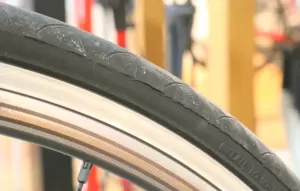 |
The normal replacement cycle :riding distance 3000km~5000km/riding for 1 year to 1 and a half years.
However, when cracks begin to appear on the side of the tire or the crown part in contact with the ground is flattened, it needs to be replaced in time. Otherwise there is a risk of tire blowout.PS: People who frequently ride long distances need to replace it once every six months. If you ride in rainy days, the wear will be accelerated even more. |
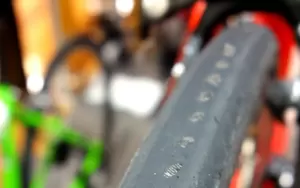 |
4. Inner tube
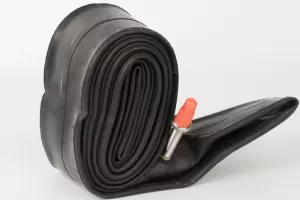 |
Inner tube replacement cycle: once a year For those who use independent outer tires and independent inner tubes, the inner tubes must also be replaced regularly. Inner tubes, like outer tubes, are often exposed to high pressure and wear out quickly. Even if there seems to be no problem, it needs to be replaced at least once a year. |
5. Tire repair fluid
|
|
Tire repair fluid replacement cycle: once every six months For road bikes that use tubeless tires, the tire sealant in the tires needs to be replaced regularly. Tire repair fluid will deteriorate or evaporate if left inside the tire for a long time. Different brands of tire sealant have instructions for regular addition and replacement. Please follow the product instructions for maintenance. But overall, it is necessary to replace the tire sealing fluid with new one at least once every six months. |
6. Brake block (disc brake)
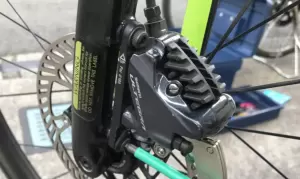 |
Brake pad replacement cycle: The remaining brake pads are lower than the manufacturer’s standards Regarding the brake pad remaining amount standard, each manufacturer will have a standard value. The brake pad of the hydraulic disc brake is inside the disc brake caliper and can be observed from the top of the brake caliper. It may be difficult for users to judge, so it is recommended to go to a nearby bicycle store for regular maintenance. The brake pad replacement cycle is related to the frequency of brake use. The higher the frequency of use, the more attention should be paid to regular maintenance. |
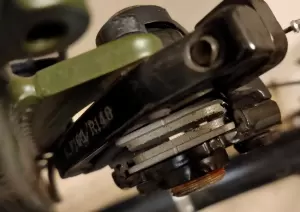 |
7. Brake disc (disc brake)
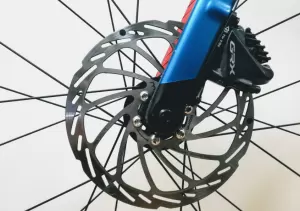 |
Brake disc replacement time 1. After the brake pads are replaced twice, the brake discs are replaced once. 2. When the brake pads are worn and have high and low surfaces or when it is difficult to correct the deformation. |
8. Brake pads (rim brakes)
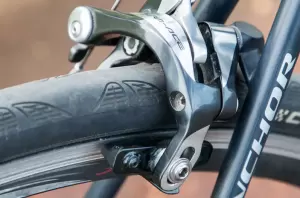 Rim brake pads |
Brake pad replacement time 1. When the grooves on the brake pads disappear 2. When worn to the limit of use Of particular note are the brake pads used on carbon fiber rims. Compared with ordinary aluminum rims, the wear and tear is overwhelmingly greater, especially when used downhill in rainy days, the wear and tear is visible to the naked eye. Therefore, the brake pads of carbon fiber rims need to be inspected carefully. |
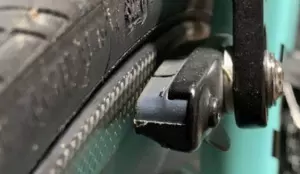 Brake pads for carbon fiber rims |
9. Brake cables (hydraulic disc brakes)
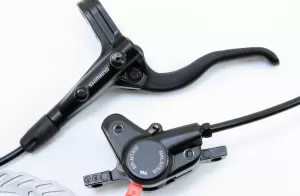 |
Replacement time: once a year or once a year and a half The hydraulic disc brake cable hose contains a liquid called brake fluid. Updates are necessary, and the wiring conduits will basically be replaced at the same time. The hydraulic disc brake cable is related to the frequency of use, but even if it is not used all the time, it is recommended to replace it at least once a year and a half. If used frequently, it is necessary to replace it every 10 months. |
10. Brake cables (rim brakes)
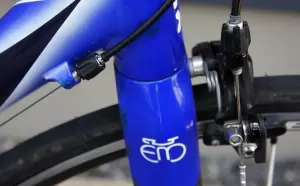 |
Replacement time: once a year or once a year and a half There is a brake line in the rim brake cable tube, also called a brake line. It is recommended to replace it every one to one and a half years. Similarly, it is recommended to replace it together with the wire pipe. |
11. Gear shift cable related (mechanical brake)
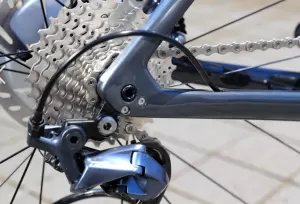 |
Replacement time: Once a year or when the shifting feeling is slow Even if it is not used frequently, it needs to be replaced regularly, because the transmission line is affected by tension for a long time and will deteriorate even if it is not used. |
12. Transmission cable related (electric transmission)
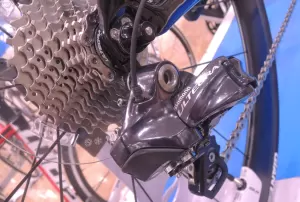 |
Since the advent of electric shifting, we have never heard of deterioration of electric shifting wires. But the battery will die and need to be replaced. |
13.Chain
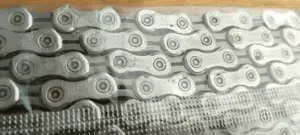 |
Replacement time: driving mileage 3000km~5000km or When it is confirmed that the chain has stretched and deformed, and the shifting performance has deteriorated. |
14. Cassette flywheel/toothed chainring/small flywheel and other sprocket related matters
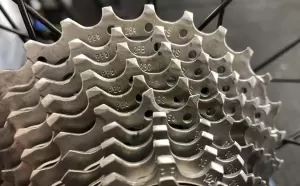 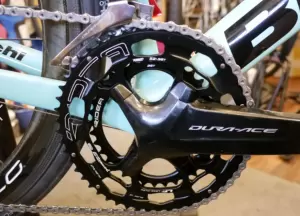 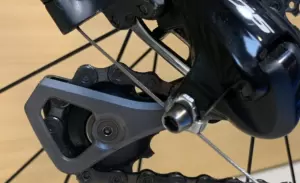 |
Replacement time: Every time the chain is replaced twice, the gear needs to be replaced once or when the speed change is not good. Cassette flywheels, toothed discs, small flywheels and other surrounding gear parts are also consumables. |
15. Handlebar straps
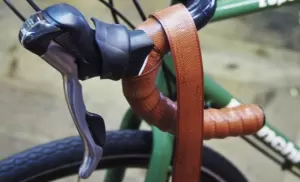 |
Replacement time: once every six months Or replace it together with the brake line and gear shift line. "The editor recommends changing the belt every three months according to the season, spring, summer, autumn and winter. It can also change your mood. For those who feel it is not necessary, it is better to ask for it to be changed at least once every six months. The straps are in direct contact with skin oils and sweat. Considering hygiene or appearance contamination, a half-year replacement frequency is appropriate. In addition, when replacing various wire tubes and wires, you can also remove the handlebars and replace them at the same time." |
The above is the explanation of the frequently replaced and important parts in the first part of this article. The second part that will be updated in the future is to explain how to use parts that are not replaced frequently but have a limited use period.



